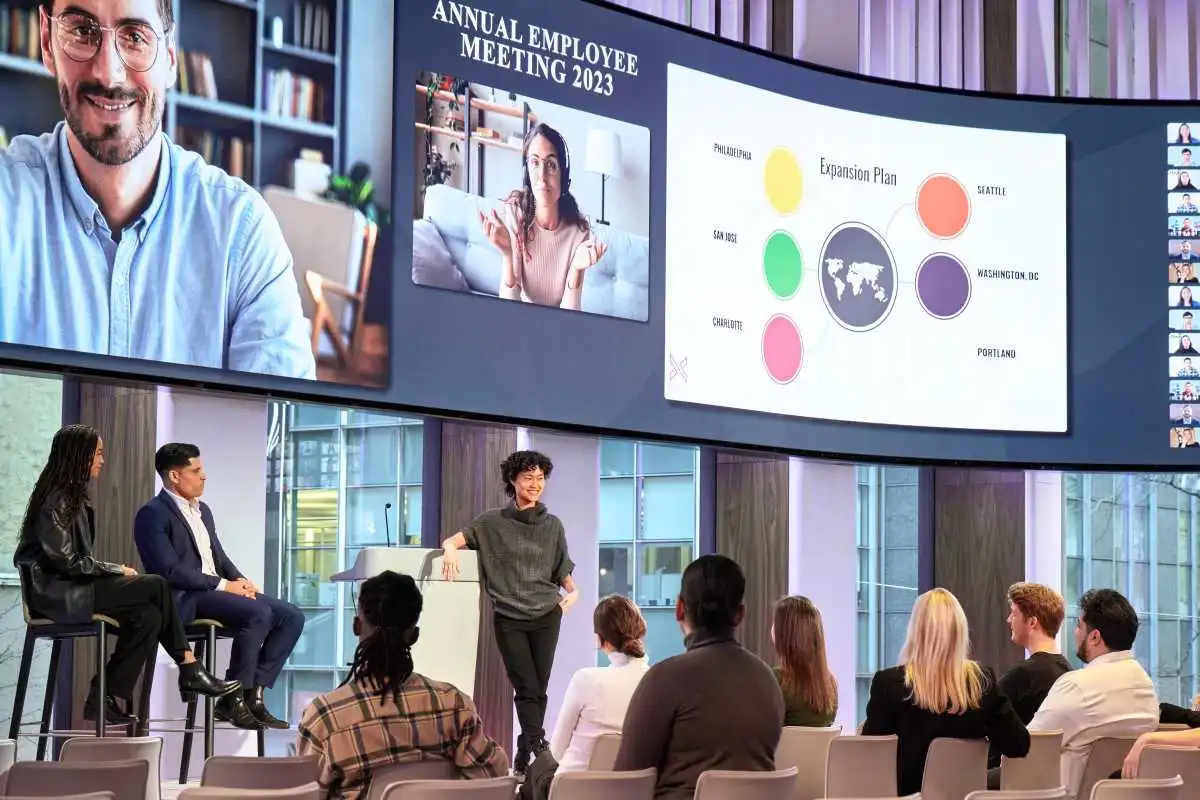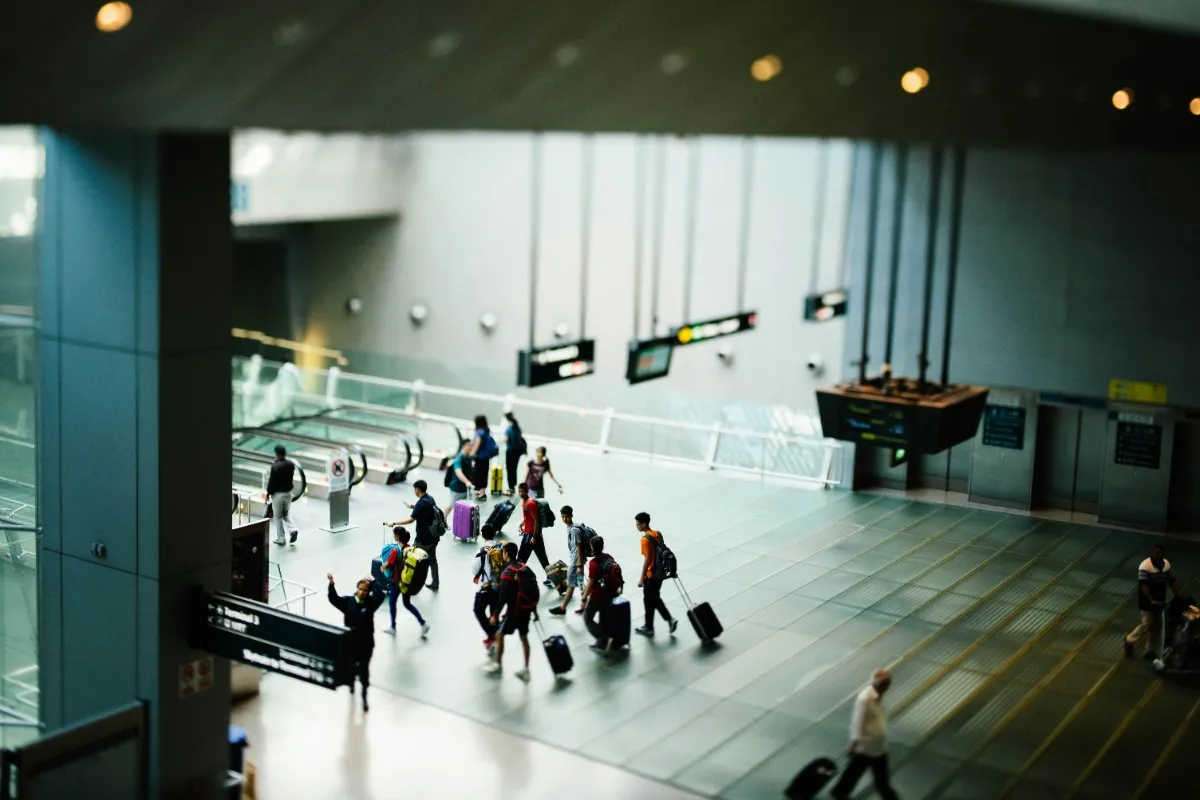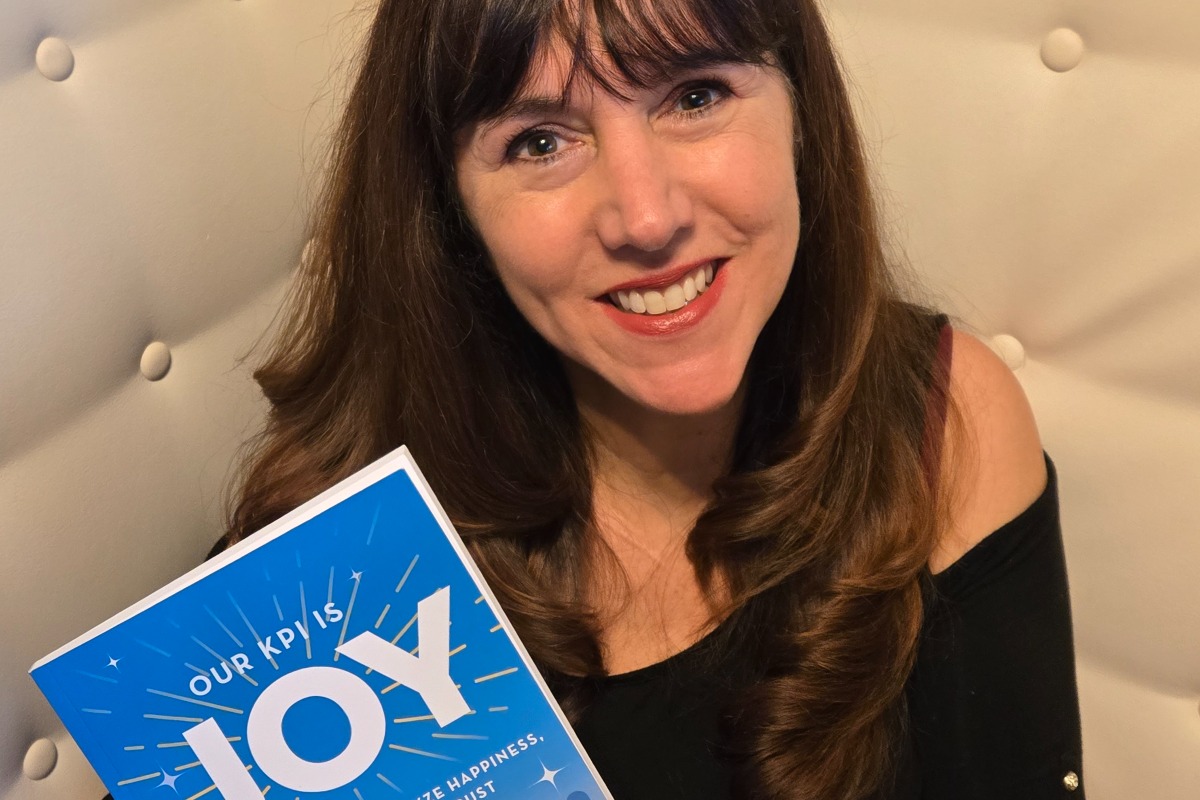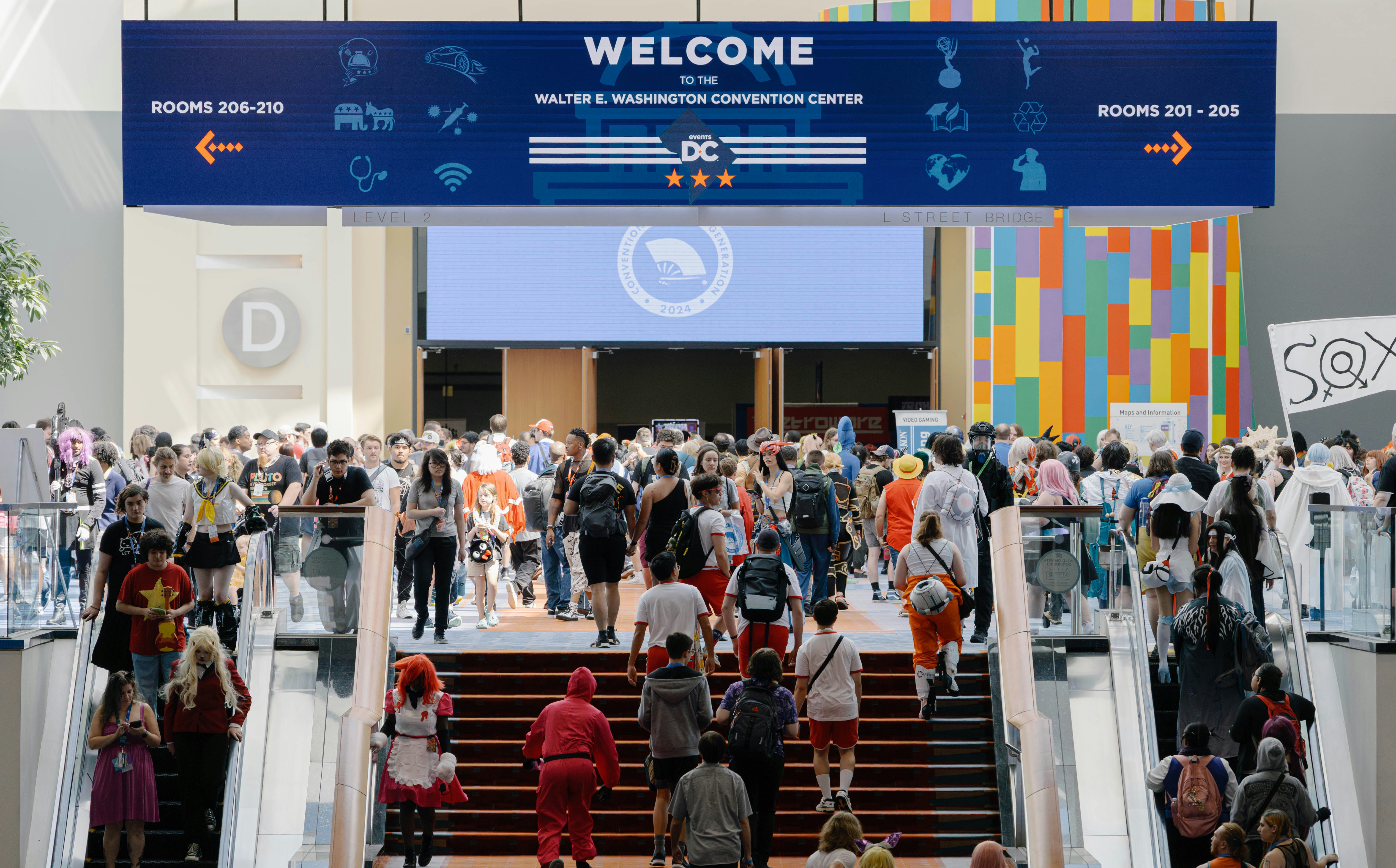How Meeting and Event Spaces Foster Employee Connection in Today’s Hybrid World


Skift Take
This content was created collaboratively by Convene and Skift’s branded content studio, SkiftX.
Despite some notable organizations instituting more robust return-to-office policies, remote and hybrid work structures remain important fixtures for the majority of companies. Gallup reports that 53% of U.S. companies offer hybrid work structures. Meanwhile, research from Future Partners found that 41% of employees split their time between the office and teleworking, and another 21% of workers are fully remote.
While many staff members enjoy the comforts of home and the absence of commuting, business growth often benefits from the magic that only face-to-face interaction sparks. Just as employees eye the best of both worlds by blending home and office time, organizations can strike the same balance by meeting face-to-face in venues outside company headquarters and virtually with staff attending from home.
These third spaces — those outside one’s home and physical office — are built to maximize time together. Meeting in these venues semi-regularly or only a few times per year can avoid some of the ruts associated with traditional office work by making it a joint experience that yields high productivity.
“In a hybrid-first working environment, one of the most important amenities a workplace can provide is human connection,” said Phoenix Porcelli, certified meeting planner and global head of sales at Convene, which offers such spaces for meetings and events in many major cities in the U.S. and UK.
Here, we explore how companies can use meetings and events to rethink the modern workplace culture for today’s hybrid environment.

Make the Meeting an Experience
Lifestyle changes resulting from remote work continue to shape how organizations operate and meet. The need for teams to integrate and interact remains vital to productivity for both sides. Statistics bear out that the perks of remote work come with some disadvantages. Without enough group time, professionals can sometimes feel disconnected from their peers and their companies. That said, a balance must be struck to meet today’s expectations. When staff come into the office or travel for a group function, they want to take full advantage of the time away from home.
This desire is borne out in business travel trends. According to Skift Research, bleisure or blended travel — employees engaging with teammates in-person and exploring a destination — increased by 72% between 2022 and 2023. Taking this desire to an extreme, 35 million digital nomads have shifted from a work-from-home to a work-from-anywhere lifestyle.
Companies can no longer take for granted the idea of the entire team being under one roof. Executives and team leaders have to remember that each time the group is together, it is an event — and time to turn on their hospitality hats.
“Promoting a ‘wow factor’ is increasingly important to help drive in-person attendance, leading to the rise in popularity of experiential events,” Porcelli said. “This ‘flight-to-experience’ is putting pressure on venues to allow for greater production services, immersive brand activations, and enhanced food and beverage offerings.”
Convene provides touchpoints that outshine traditional office offerings. Nourish stations, which include coffee machines, beverage selections, and unlimited snacks, are an example of how Convene thoughtfully places amenities throughout venues to encourage modern and more elevated “watercooler” moments. Additionally, in-house executive chefs build seasonal and regional menus for fulfilling and sustainable meals.
Companies and their staff welcome the extra attention to detail. Convene tracked a 22% increase in year-over-year demand for events, largely driven by this experience economy and attendees’ expectations for a new definition of ROI: return on interaction.
These heightened offerings are more than functional — they are symbols that employers value their employees, said Porcelli. “Having a catered hot lunch expertly prepared by a team of executive chefs beats a soggy sandwich tray. And branded cookies can be an extra treat that makes your team feel welcomed and appreciated before ending the day with a champagne toast to celebrate a job well done,” Porcelli said.

Build for Togetherness
In fostering greater teamwork and improved efficiency, companies need to eliminate silos. Traditional office cubicles, for instance, provide minimal privacy for phone calls and virtual meetings and don’t add much value to integrated experiences.
Convene, on the other hand, offers flexible space options to meet the needs of organizations, whether they are hosting a monthly team planning session for 20 leaders in an off-site boardroom, a quarterly department meeting and luncheon for 50 attendees, or a bi-annual town hall for 200 or more team members.
Long before hybrid work gained widespread acceptance, Convene built its model around column-free spaces that can accommodate experiential events. Locations like Convene Brookfield Place in New York City are designed to offer technical support, such as trussing, rigging, full theatrical lighting systems, and complex AV production booths, to facilitate an immersive event.
Convene’s blank canvas lets planners create spaces that meet the meeting’s goals. Classroom-style setups lean toward learning and information sessions, while brainstorming may be better accomplished via informal structure and soft seating.
Meeting planners should factor in common areas with a variety of options, including singular work tables, cafe seating, and phone booths. Creating as many opportunities as possible for attendees to interact is important, Porcelli noted.

Provide Warm Hospitality
Many of Convene’s team members come from high-end hotels and fine-dining establishments, and they have experience creating special moments. This background enables Convene to build environments for a variety of needs, including product launches, brand activations, award ceremonies, exhibitions, conferences, fundraisers, galas, and networking receptions.
Some clients use the venues as a touchdown space for team members a few times per week, while others seek offsite meeting rooms to bring teams together for full-day or multi-day in-person working sessions a few times per year.
Regardless of how companies define work environments in today’s hybrid-first world, organizational leaders should consider that their choices will reflect the company culture. Organizations celebrating togetherness through special events that embrace their staff's priorities can enjoy greater employee retention and a commitment to excellence.
“The success of any organization hinges on employee engagement as well as trust and collaboration across teams — this cannot be accomplished on the same level through video meetings, emails, and instant messages alone,” Porcelli said.
To learn more about Convene and inquire about a booking program, click here.
This content was created collaboratively by Convene and Skift’s branded content studio, SkiftX.




